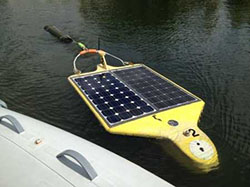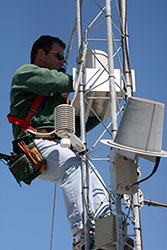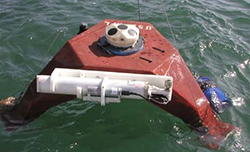
The Bureau of Ocean Energy Management (BOEM), in partnership with the Coastal Marine Institute at Louisiana State University, has launched an economic study of the Gulf of Mexico Coastal Ocean Observing System (GCOOS). The three-year cooperative project between BOEM and the LSU will enhance our understanding of the social and economic value of GCOOS, while providing decision makers the data necessary to plan for future changes to the GCOOS.
GCOOS is a stakeholder-based partnership of academic/research institutions, non-profit and for-profit private corporations, and local, state and federal agencies that support important integrated ocean observations, data products, and outreach and education. Together, they support resilient Gulf of Mexico communities, ecosystems and economies. GCOOS is one of 11 regional networks analyzing data transmitted via satellite from ships, buoys, underwater gliders and other technologies that monitor the earth’s oceans and atmospheric conditions.
Having fully aggregated, integrated and searchable ocean and atmospheric information available prior to, during, and following catastrophic events has significant implications for the forecasts directed at saving lives, property, and ecosystem function. This was demonstrated repeatedly by events such as Hurricanes Ike, Isaac, Katrina, Rita, Sandy, and the Macondo oil spill. From an economic perspective, the nominal investment made to date in observing systems has great value to society. Yet, the benefits the system provides both to direct users of the data and the public at large have not been accurately quantified. Activities associated with the Gulf of Mexico account for more than $2.2 trillion in ocean-related revenue.
The study’s Principal Investigators, all from the Center for Natural Resource Economics and Policy in the LSU AgCenter Department of Agricultural Economics and Agribusiness, include Drs. Richard F. Kazmierczak, Professor of Natural Resource Economics, Center for Natural Resource Economics & Policy (CNREP); J. Matthew Fannin, Associate Professor of Regional Economics and Community Development, Louisiana Center for Rural Initiatives (LCRI); Rex H. Caffey, Professor of Natural Resource Economics, Center for Natural Resource Economics & Policy (CNREP) and Louisiana Sea Grant Program; and Michelle A. Savolainen, Ph.D. Candidate. The study will have a total fixed budget of $752,517, shared between BOEM and the Coastal Marine Institute at LSU.
The current study will not only assess the value of GCOOS during catastrophic events, but for routine operations of U.S. Gulf of Mexico activities that include 11 of the top 15 U.S. tonnage ports, four of the top seven fishing ports by weight, 20% of domestic crude oil and about 5% of natural gas production, and a tourism industry exceeding $34 billion annually. The project duration is for three years. Click here to view the GCOOS study profile.
For additional information about BOEM’s Environmental Studies Program, marking its 40th year, visit www.boem.gov/studies.


